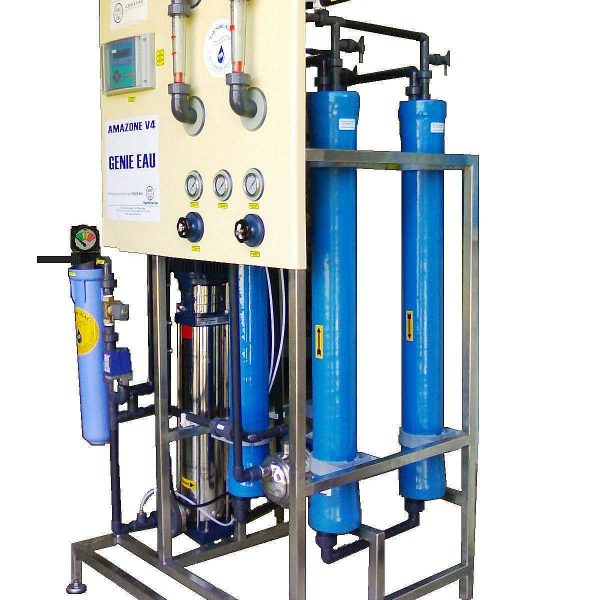
In the system, the low-saline or purified permeate - the feedwater that has passed through the membrane - remains isolated from the concentrate flow. A concentrate valve controls the percentage of feedwater that goes to the concentrate stream and the permeate. The pressure forces some water to cross the semipermeable RO membrane, resulting in a low-saline or purified product called permeate on one side, and a high-saline or concentrated brine, called concentrate or reject, on the other. In essence, crossflow filtration happens like this: A high-pressure pump continuously pumps feedwater into the element of the reverse osmosis water treatment system. This process forces lower-concentration water through the RO membrane, while the separated flow of higher-concentration water moves across the surface of the membrane, carrying away the rejected salts and impurities. To significantly reduce the rate of membrane fouling, RO elements use crossflow filtration. This, in turn, can decrease the performance of a reverse osmosis water treatment system overall. Precipitate salts and other impurities that a pressurized flow of feedwater forces against a semipermeable RO membrane can clog or “foul” that membrane. Reverse osmosis water treatment is also often used to produce ultrapure water for the semiconductor industry, in boiler water treatment for the power industry, and for applications in the health care and bioprocessing industry. Desalination of seawater or brackish water to produce drinking water.

Using RO as a pretreatment process for ion exchange (IX) can substantially reduce the operating costs and regeneration frequency of the IX system. Reverse osmosis water treatment can provide finer filtration than either nanofiltration or ultrafiltration. Typically, reverse osmosis water treatment results in a rejection of dissolved salts that is 95 – 99 percent or greater, depending on membrane type, feed composition, temperature, and system design. The pressure forces the higher-concentration solution back across the semipermeable membrane, leaving solutes that are blocked by the semipermeable membrane behind. In reverse osmosis (RO), pressure that exceeds a system’s osmotic pressure is applied to that system. As the amount of solution on the higher-concentration side increases, pressure on that water column rises until it is high enough to hinder the flow of the lower-concentration solution across the membrane.

In ordinary osmosis, when a semipermeable membrane separates solutions of differing solute concentrations, the lower-concentration solution flows into the higher-concentration solution in attempt to reach equilibrium: an equal degree of solute concentration on both sides of the membrane.


 0 kommentar(er)
0 kommentar(er)
